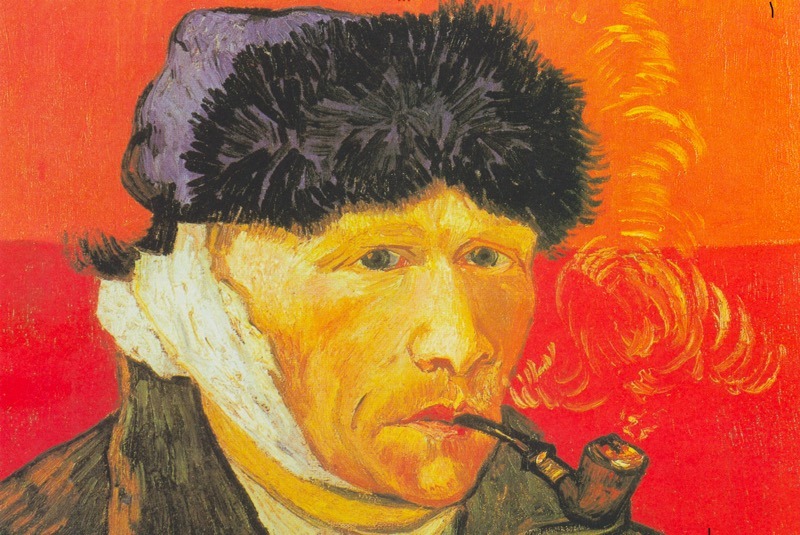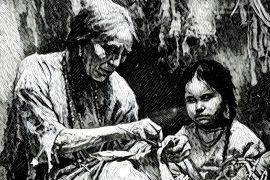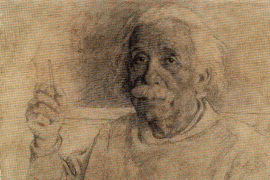Van Gogh was born with a brain defect that many experts believe was exacerbated by his long-term use of absinthe, which caused his epileptic condition. Doctors believed Van Gogh’s seizures were caused by temporal lobe epilepsy. Van Gogh supposedly used digitalis to cure his epilepsy. This prescription medication can produce yellow vision or spots, which could be one of the reasons Van Gogh liked this hue so much.
Van Gogh made art out of his epileptic condition. So many suffering from this disorder have found success through the battles by effectively managing it. Many well-known personalities — such as Theodore Roosevelt, Prince, and even Napoleon— had epileptic seizures. All of them have managed to fight the disease through courage and faith in themselves. However, there is a strong need for building awareness about epilepsy and the stigma attached to it.
Epilepsy, a neurological condition that causes seizures, affects the central nervous system. In medical terms, epilepsy is defined as experiencing two or more unprovoked seizures; the impact could vary from mild to severe. One can suffer an inexplicable seizure without suffering from the condition. At times, a seizure can also result from an illness or accident.
Epilepsy cannot be cured, but it can be managed. Doctors can suggest measures to manage seizures and reduce damage. In truth, the vast majority of persons with epilepsy can live a long, healthy, and normal life and find success through the condition.
Over fifty million people in the world live with epilepsy. The condition is more common in developing countries; in India alone, there are over ten million people with this condition.
Many patients with active epilepsy do not get proper therapy; they do not have access to medical facilities for diagnosis and treatment; those who do have access to biomedical therapies but do not adhere to the prescribed antiepileptic medicines (AEDs).
A lack of information about antiepileptic medicines, poverty, cultural beliefs, stigma, inadequate health infrastructure, and a dearth of qualified doctors exacerbate the situation. More than 90 per cent of epileptic patients in rural India do not have access to Epilepsy; about 22 per cent of urban, middle-income individuals have access to medical facilities.
The icon of the Western music industry, Prince, had rarely ever mentioned that he had epilepsy. In an interviewwith Travis Smiley, the rock star said:
I’ve never spoken about this before, but I was born epileptic, and I used to have seizures when I was young, and my mother and father didn’t know what to do or how to handle it, but they did the best they could with what little they had.
Prince claimed his seizures were suddenly cured. He went to his mother and said he would not be sick again. When asked why, Prince replied, “Because an angel told me so.”
Without questioning Prince’s faith, not every epileptic person can be as fortunate as him in overcoming epilepsy. However, it is not uncommon for children to grow out of their epileptic seizures. Successful management of epilepsy can be attained with medical and surgical aid, along with some lifestyle changes.
There are two types of seizures: generalised seizures, which affect the whole brain, and focal seizures, also known as partial seizures, which involve only one portion of the brain. A mild seizure may be difficult to recognise. It may last a few seconds, and one can be completely oblivious to it.
Stronger seizures, which can last anywhere from a few seconds to many minutes, can cause spasms and uncontrollable muscle jerks. Following a more severe seizure, some patients get disoriented or lose consciousness. One could have no recollection of what transpired after that.
Any seizure calls for the doctor’s attention. Epilepsy can be diagnosed through a doctor, who would be required to rule out any other conditions that may cause the seizure. Epilepsy may affect anybody, although it is more common in young children and the elderly. Men are somewhat more affected than women.
Seizures can happen for a variety of reasons. Lack of sleep, sickness or fever, stress, brightness, flashing lights or patterns, coffee, alcohol, medications or drugs, missing meals, overeating, or specific food ingredients are some of the many reported causes of epileptic seizures.
It is not always straightforward to identify triggers. A single occurrence does not always indicate that anything is a trigger. Usually, a combination of circumstances causes seizures. Keeping a journal to record seizures is an excellent method to identify triggers.
Once epilepsy has been diagnosed, the doctor may recommend treatment options such as anti-epileptic (anticonvulsant, antiseizure) drugs, vagus nerve stimulator, ketogenic (high-fat content) diet, or brain surgery. The recommendations are based on the symptoms’ severity, impact on the patient’s health, and response to therapy. New therapies are still being researched; radiosurgery and less invasive surgery are also being studied.
Children with epilepsy may face uncertainty in their lives. The thought of having a seizure in front of friends and classmates might be frightening. These emotions might drive a kid to act out or retreat from social situations.
Most youngsters learn to adjust with time. For others, social dysfunction might last until adulthood. It is also necessary to fight the stigmas around epilepsy. People still believe in myths about epilepsy that deem the condition as a punishment or consequence of higher order.
Some teachers attempt to keep epileptic kids from participating in school trips or activities. Children may be barred from parties and other social events because the parents of their peers are afraid of having to cope with a seizure.
Worse, it may hinder a child from forming friends and result in bullying or teasing. Between 30 and 70 per cent of people with epilepsy also experience depression, anxiety, or both. Anti-seizure medicines can also have an impact on behaviour.
Theodore Roosevelt, the twenty-sixth President of the United States, battled with epilepsy, too. Roosevelt never addressed epileptic seizures in public due to the stigma and eugenic movements. He indirectly addressed overcoming the challenges to his health, saying,
“Far better is it to dare mighty things, to win glorious triumphs, even though checkered by failure … than to rank with those poor spirits who neither enjoy nor suffer much because they live in a grey twilight that knows not victory nor defeat.”He also said, “Courage is not having the strength to go on; it is going on when you don’t have the strength.”
-30-
Copyright©Madras Courier, All Rights Reserved. You may share using our article tools. Please don't cut articles from madrascourier.com and redistribute by email, post to the web, mobile phone or social media.Please send in your feed back and comments to [email protected]











